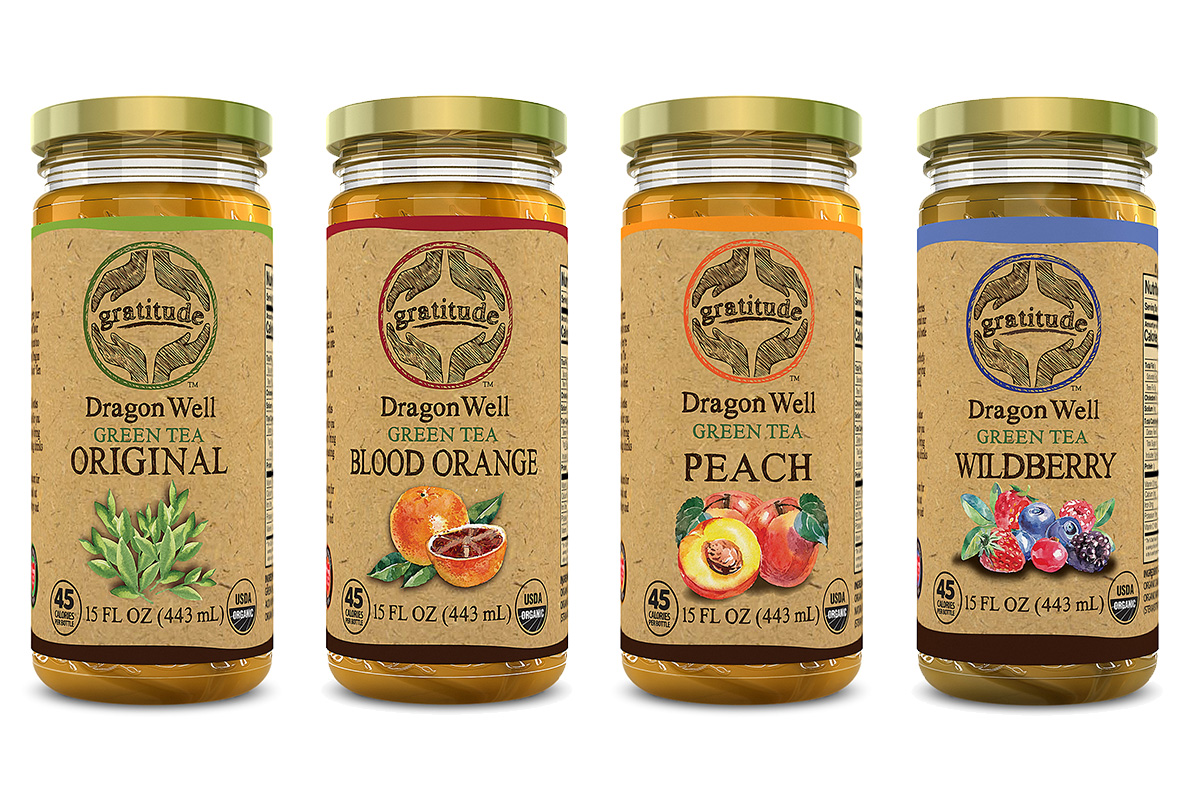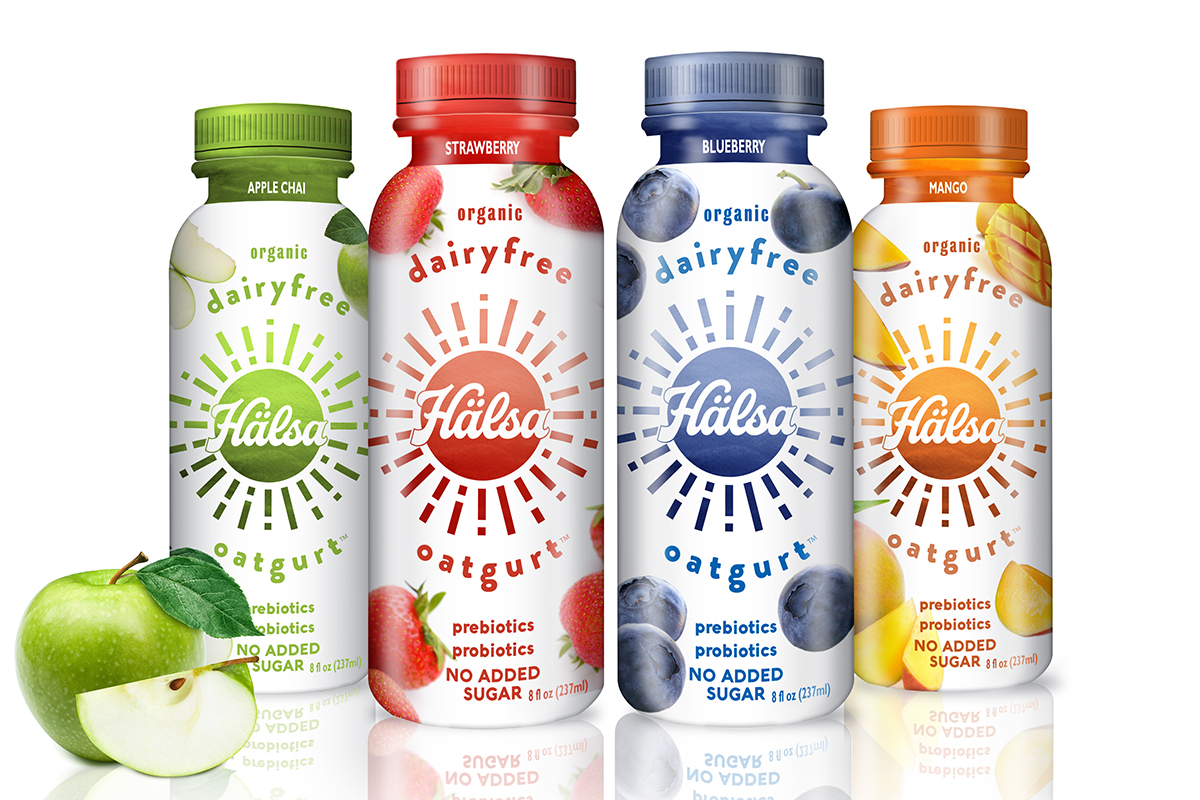KANSAS CITY — Soon after fairlife L.L.C., Chicago, introduced fairlife Yup!, a line of single-serve flavored milk lower in sugar and higher in protein than traditional flavored milk, in a test market in 2015, the company replaced the artificial sweeteners with monk fruit juice concentrate. The change was made to bring the new beverage into alignment with consumer demand for products perceived as clean.
The formulation change, in combination with a touch of sugar cane and use of the lactase enzyme, yielded a shelf-stable lactose-free milk with 25% less sugar. The flavored milks only use natural flavors, and to assist with color, the strawberry variety includes red tomato lycopene.
“Yup! is positioned as a better flavored milk choice,” said Anders Porter, vice-president of communications at fairlife. “This means no artificial sweeteners, and less sugar and a little more protein than the competition.”
Most beverage innovations today avoid using chemical-sounding additives or any ingredient perceived as artificial, most notably certain colors, flavors, preservatives and sweeteners. It is part of the clean label trends and it has become the new norm in beverage formulation, referring to both the use of simple ingredients and transparent conversation. So, when there’s a must-include ingredient that may catch the eye of the discerning label-reading shopper, many beverage marketers make efforts to explain why it’s included and the value it brings to the beverage formulation.

Keeping it short and simple
The consumption of products perceived as clean is one of the top approaches consumers use to achieve a healthy and balanced lifestyle, according to “Defining clean label – Moving from trend to norm,” a report from NMI, Harleysville, Pa.
“Consumers accomplish this by being savvy label readers and are increasingly looking for more pure and simple food products with cleaner labels and ingredients,” said Maryellen Molyneaux, managing partner at NMI.
Consumers increasingly are seeking what they define as “real” foods and beverages. This perference is exemplified by a growing market for products with a short list of recognizable ingredients, a commitment that has grown from about a third of the U. S. population in 2006 to 54% of all consumers today, according to NMI research.
“The growth of natural and organic foods and beverages is clearly linked to consumers’ focus on products with attributes that meet their desire for simplicity,” Ms. Molyneaux said. “While taste and nutrition content are consistently rated as the most important attributes of food and beverage purchases, those that show the most growth center around cleaner and natural or organic ingredients.”
New Slice Ventures L.L.C., Newtown, Pa., is introducing organic Slice, a four-flavor line of sparkling water containing no added sugars, artificial sweeteners or colors, and no caffeine. At only 25 calories per 12-oz can, Slice gets its sweetness from 100% fruit juice.
Organic Hälsa Oatgurt, a dairy-free probiotic, prebiotic and no-added-sugar plant-based smoothie was developed on the principles of being clean label.
“Natural food brands are doing many things right, but they haven’t gone far enough to offer the American consumer 100% clean food, since many products still contain artificial ingredients,” said Mika Manninen, co-founder of New York-based Hälsa Foods. “With our 100% clean label Hälsa Oatgurt we are raising the bar and showing it’s possible to make plant-based beverages without using a single artificial ingredient.”
Helena Lumme, co-founder, said, “It took four years of research to come up with a 100% clean line of dairy-free products, and consumers are responding to this message.”

In search of desirable labels
Clean label is an arbitrary phrase with few in the food-supply chain agreeing on any one definition. Most companies have made clean label a priority. Whether it is simple formulations, transparency on labels or avoiding specific categories of ingredients, clean label is driving innovation and reformulation.
Westchester, Ill.-based Ingredion, Inc. surveyed 1,000 consumers in the United States and Canada who are frequent purchasers of beverage products to understand their perceptions of clean label beverages. Most respondents in the November 2017 survey agreed label claims such as no artificial ingredients, no preservatives, no genetically modified organisms (G.M.O.s) and organic suggested a clean label beverage. Other indicators included labels with recognizable ingredients, with the fewer ingredients the better.
“Viewing the beverage segment as a whole, consumers defined clean label as simple, minimal and free of artificial ingredients,” said Afrouz Naeini, senior manager of beverage at Ingredion.
The survey explored five different beverage segments to understand consumers’ preconceived attitudes toward the “cleanliness” of products. The data helped identify opportunities to formulate more label-appealing products.
Consumers were asked to rate five beverage sub-segments — alternative dairy drinks, sports nutrition/powder drink mixes, ready-to-drink (R.-T.-D.) sports nutrition/protein shakes, R.-T.-D. coffee drinks and fruit drinks — on a scale of “not at all clean” on one end and “extremely clean” at the other. Alternative dairy drinks and sports nutrition beverages (both powder mixes and R.-T.-D. protein shakes) were viewed as being slightly cleaner than the other types of beverages.
“The survey explored attributes that matter most to today’s beverage consumers,” Ms. Naeini said. “We asked participants to select the most appealing feature of beverages in each sub-segment and learned that it did vary by beverage type.”
The most appealing attribute among alternative dairy drinks was no artificial ingredients (52%), followed by low-sugar content (51%). The attributes were even more important with fruit drinks, with scores of 70% and 53%, respectively. This is likely due to fruit drinks being a popular beverage for children, with some parents trying to make better-for-you choices for the younger household family members.
With R.-T.-D. coffees, both no artificial ingredients (50%) and low-sugar content (45%) ranked highest, with low-calorie content also an indicator of appeal by 30% of respondents.
“What seals appeal in sports beverages was little different,” Ms. Naeini said. “In R.-T.-D. options, added protein was the leading desirable label claim (46%), followed by low-sugar content and no artificial ingredients, both scoring 41%, and added vitamins (38%).”
On the sports drink mix side, low-sugar content (43%) was most important, followed by added vitamins (39%), no artificial ingredients (37%) and added protein (37%).
“We asked consumers what traits they look for to signal a better-for-you beverage,” Ms. Naeini said. “Across all beverage categories, no artificial ingredients was clearly the most compelling attribute, reflecting the consumer perception that naturally derived ingredients are better for them.
“This is an example of the connection consumers make between clean and simple products and the desire for improved health and nutrition. Reduced or low-sugar content, also a critical influencer in our research, presents another opportunity for manufacturers who want to align their beverages with today’s health and nutrition expectations.”

Avoiding ingredients of concern
Natural and artificial continue to be tricky terms in the food and beverage formulating world, as there are only four ingredient categories for which the U.S. Food and Drug Administration provides some clarity. Even within these ingredient categories, there are several non-artificial ingredients that discerning shoppers may perceive to not be clean.
Among colors, the F.D.A. classifies color additives as either “certified” or “exempt from certification.” The former is commonly referred to as artificial or synthetic; and the latter, by default, is often characterized as natural. Colors exempt from certification include pigments derived from fruits, vegetables, minerals and even animals.
Colors from nature include carmine, which is derived from insects and produces a deep, strong, wine red color. It is stable to heat, light and pH, but because of its animal derivation, is neither kosher nor vegan. Its use has come under scrutiny in recent years and is on Whole Foods Market’s unacceptable ingredient list.
In beverage formulations where opacity is desired, formulators often use titanium dioxide, which is derived from mineral oxides and creates a bright white color. Though it’s not a certified color, its chemical-sounding name does not complement the clean label platform. Suppliers now offer white opacity alternatives derived from plants.
Brown is a common color in many soft drinks, namely colas and energy beverages, as well as chocolate-flavored protein drinks. Manufacturers typically rely on caramel colors, which are produced through the controlled heat treatment or cooking of carbohydrates, a process known as caramelization.
There are four classes of caramel color, based on production method. Some discerning consumers may be concerned with the chemical 4-Methylimidazole, which forms naturally during the production of Class III and Class IV caramel colors. While there has been an industry shift to use Class I caramel color in efforts to clean up formulations, all classes of caramel color are simply labeled “caramel color” or “caramel” on ingredient statements. Supporting marketing materials may elaborate on caramel class.
Further, the most common source of carbohydrate to make caramel colors comes from corn, which may bring the topic of G.M.O.s into the conversation. In response, suppliers now offer non-G.M.O. caramel colors and caramelized sugar syrups.
Regardless of color selection, beverage marketers must remember that the F.D.A. does not consider any color added to a food as being natural, unless the color is natural to the product itself, such as strawberry extract boosting the red color of strawberries in a strawberry smoothie. Therefore, when flagging the use of clean colors in a formulation, it is more common to use label claims such as “free from synthetic colors” or “colored with vegetable juice” rather than “all natural.”
The use of flavors in beverages is straightforward. They are either natural or artificial. Both are manufactured through the blending of chemicals. The difference is essential oils are used in the manufacture of natural flavors, while lab-produced chemicals are blended to simulate essential oils in artificial flavors.
The category of preservatives is also quite clear in terms of naturalness. The F.D.A. defines a chemical preservative as any chemical that, when added to food, tends to prevent or retard deterioration. Ingredients excluded from this list include common salt, sugars, vinegars, spices or oils extracted from spices, as well as substances added to food by direct exposure, for example wood smoke.
Consumers expect refrigerated beverages to have a shorter shelf life, as they are perishable living systems. Chemical preservatives are usually not necessary, unless the goal is for a lengthy shelf life. And even then, many manufacturers rely on processes, such as pasteurization and high pressure, instead of ingredients to add longevity to the product.
With some shelf-stable beverages, high-temperature processing is enough to maintain an acceptable shelf life. However, soft drinks and juice beverages often will include food-grade acids to lower pH, which helps extend shelf life, as well as positively influence flavor. A number of these acids and their salts are on Whole Foods Market’s unacceptable ingredient list.
The category of sweeteners has room for interpretation. The F.D.A. does not impose the descriptor of artificial to any sweetener, rather, there are six high-intensity sweeteners — acesulfame potassium, advantame, aspartame, neotame, saccharin and sucralose — approved as food additives in the United States. Even though they are not legally classified as artificial sweeteners, this descriptor has become common language, making label claims such as “free from artificial sweeteners” increasingly popular in the clean label movement.
There is an array of sweeteners — fully caloric carbohydrates to high-intensity plant extracts — available to beverage formulators, some of which have cleaner reputations than others. Agave, honey, monk fruit, pure cane sugar and stevia have all gained traction in the natural products channel as wholesome, naturally derived sweetening options.
In fact, formulators should determine their clean label goals early on in the product development process in order to identify their toolbox of ingredient options. The less is more trend shows no signs of abating.
“Consumers are becoming more expectant that the food and beverage industry is mindful of offering options that they feel good about,” Ms. Molyneaux said. “This paradigm shift is becoming the dominant, new pillar of responsible production and marketing.”




